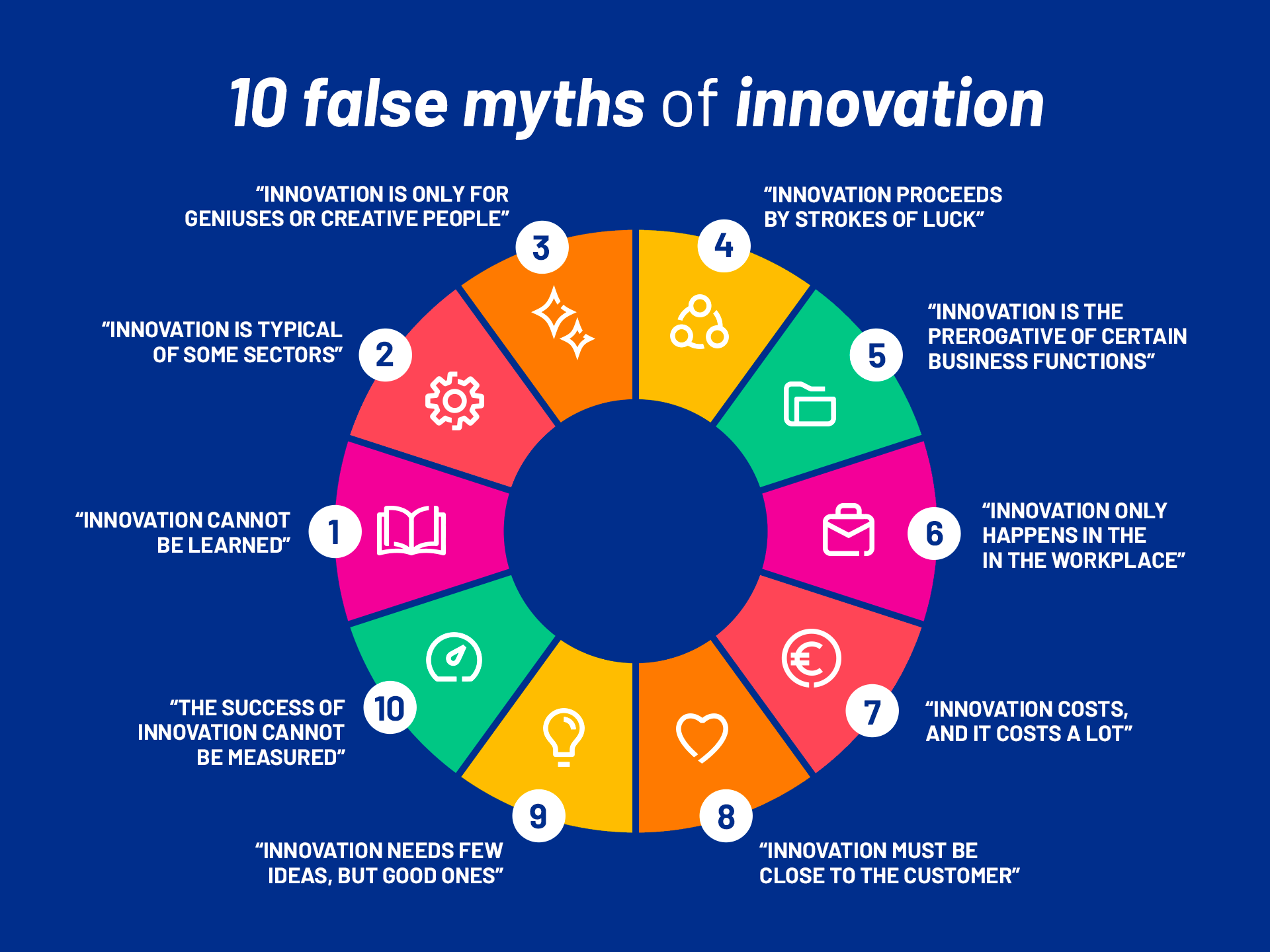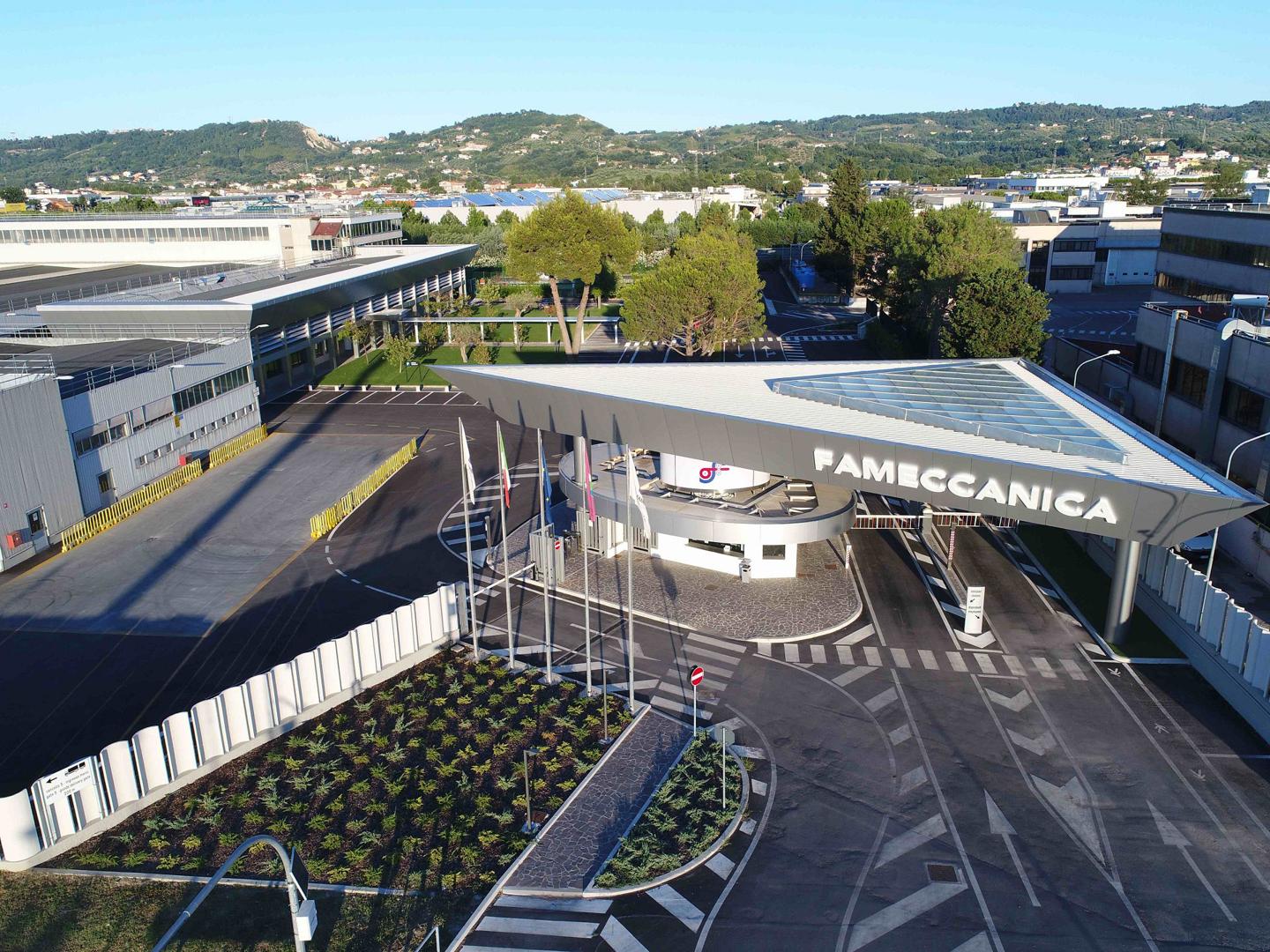Innovate or disappear? Why innovation is necessary but difficult to achieve
Share
A recent survey conducted on over four thousand CEOs of companies from 105 countries worldwide has revealed that 40% of the CEOs believe that their business will no longer be sustainable within a maximum of ten years if they do not change their current strategy. The other interviewed managers, on the other hand, share the same opinion but give themselves more time: they think that it will take more than ten years to exit the market if they remain inactive (https://www.pwc.com/gx/en/issues/c-suite-insights/ceo-survey-2023.html).

Innovate or disappear?
In other words, everyone recognizes that it is necessary to innovate in order to stay competitive, or else face the risk of disappearing. And probably, this is even truer today than it was yesterday. McKinsey has shown how in recent years, the top 1% of the most profitable companies has incurred Research and Development expenses almost three times higher than the average, while twenty years ago, the most profitable companies had expenses that were less than twice the average of other companies (McKinsey Global Institute, "Superstars. The dynamics of firms, sectors, and cities leading the global economy," Discussion Paper October 2018.)
The effect of innovation on business performance is also noticed, and perhaps especially, during times of crisis. Several studies have shown that the most innovative companies are those that have responded better to the 2020 crisis (See, among others, https://media-publications.bcg.com/BCG-Executive-Perspectives-Race-for-Innovation.pdf).
The same can be said for the 2007-2009 crisis: companies that did not cut Research & Development expenses, even in the face of higher borrowing costs, were the ones that achieved the best performance in the period following the crisis (C. Flammer, I. Ioannou (2021). "Strategic management during the financial crisis: How firms adjust their strategic investments in response to credit market disruptions." Strategic Management Journal, Vol. 42, Issue 7).
These results underline that innovation pays off; indeed, it is necessary, because it leads to two fundamental advantages for companies. One is obvious, the other is less obvious (P. Geroski, S. Machin, J. Van Reenen (1993). "The profitability of innovating firms." RAND Journal of Economics, Vol. 24, Issue 2).
The first advantage is that through product innovation, companies can obtain unique products of higher quality and appeal, for which customers are willing to spend more. At the same time, through process innovation, lower production costs can be achieved. In this way, companies can create a competitive advantage.
The second benefit of innovation, probably less obvious, is to make companies more receptive to external knowledge and more resilient in times of crisis. The very process through which innovation is generated, combined with investing in innovation consistently over time, triggers a learning process capable of transforming the competencies of companies, making them more capable of capturing know-how spillovers from the surrounding environment and less sensitive to macroeconomic shocks. Thus, they are more capable not only of inventing but also of reinventing themselves.
But innovating is difficult
If it is therefore evident that knowing how to innovate is fundamental, it is also evident that innovating is not easy. Why is it so difficult? Over the years, different explanations have been proposed. Here, I would like to focus on just one of them.
Innovating is difficult because managing innovation requires a delicate balance between extremes that often appear to be irreconcilable, even if in reality, they are not.

Here are two examples. Effective innovation management requires top management to be able to think simultaneously about the present and the future, and to combine the exploitation of current resources, competencies, and markets with the exploration of resources, competencies, and markets of the future. Yet, the same CEOs interviewed in the aforementioned survey,1 recognize that they do not dedicate sufficient time to planning for the future, and that they are unable to balance - in terms of time and allocation of financial resources - the pressure of day-to-day management (from geopolitical risks to inflation) with the definition of a future strategy. Urgency can lead one astray from priorities.
The second example concerns the corporate culture of an innovative company. It is known that everyone would prefer to work in a lean company, with a not very hierarchical organization, where experimentation is continuous and failure is allowed. However, although these dimensions of corporate culture certainly have a positive value, they often do not lead to the desired results in terms of innovation if not counterbalanced by strong leadership, low tolerance for incompetence, and strong individual accountability (See, for example, G. Pisano (2019). "The hard truth about innovative cultures," Harvard Business Review, January-February.)
Knowing how to manage these and other organizational trade-offs is not easy, but it is the basis of successful strategic innovation.
Sources
- https://www.pwc.com/gx/en/issues/c-suite-insights/ceo-survey-2023.html
- https://media-publications.bcg.com/BCG-Executive-Perspectives-Race-for-Innovation.pdf
- https://www.mckinsey.com/~/media/mckinsey/featured%20insights/innovation/superstars%20the%20dynamics%20of%20firms%20sectors%20and%20cities%20leading%20the%20global%20economy/mgi_superstars_discussion%20paper_oct%202018-v2.pdf
- https://onlinelibrary.wiley.com/doi/10.1002/smj.3265
- https://www.jstor.org/stable/2555757
- https://hbr.org/2019/01/the-hard-truth-about-innovative-cultures
 Angelini Industries
Angelini Industries




